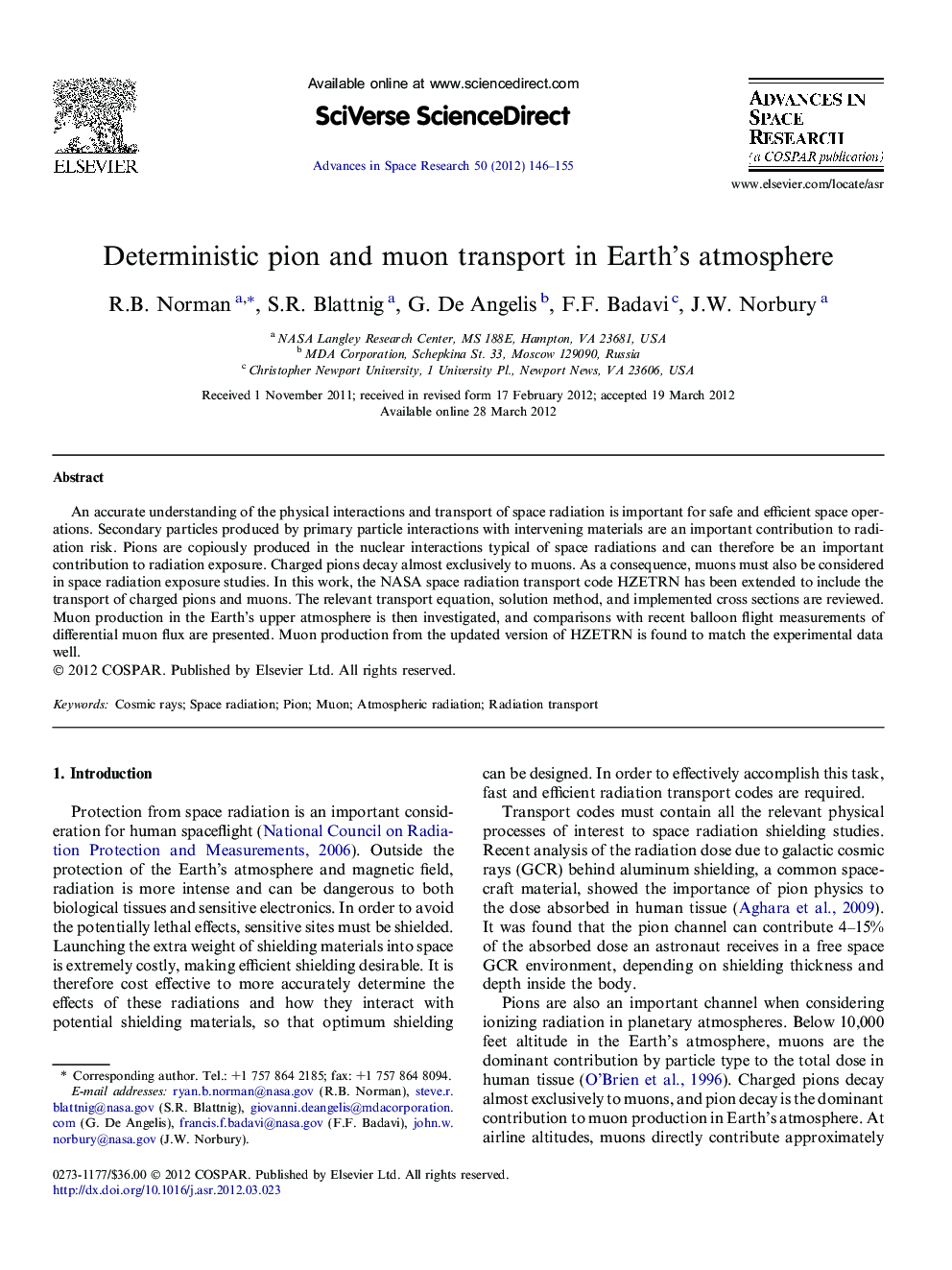| Article ID | Journal | Published Year | Pages | File Type |
|---|---|---|---|---|
| 1765964 | Advances in Space Research | 2012 | 10 Pages |
An accurate understanding of the physical interactions and transport of space radiation is important for safe and efficient space operations. Secondary particles produced by primary particle interactions with intervening materials are an important contribution to radiation risk. Pions are copiously produced in the nuclear interactions typical of space radiations and can therefore be an important contribution to radiation exposure. Charged pions decay almost exclusively to muons. As a consequence, muons must also be considered in space radiation exposure studies. In this work, the NASA space radiation transport code HZETRN has been extended to include the transport of charged pions and muons. The relevant transport equation, solution method, and implemented cross sections are reviewed. Muon production in the Earth’s upper atmosphere is then investigated, and comparisons with recent balloon flight measurements of differential muon flux are presented. Muon production from the updated version of HZETRN is found to match the experimental data well.
